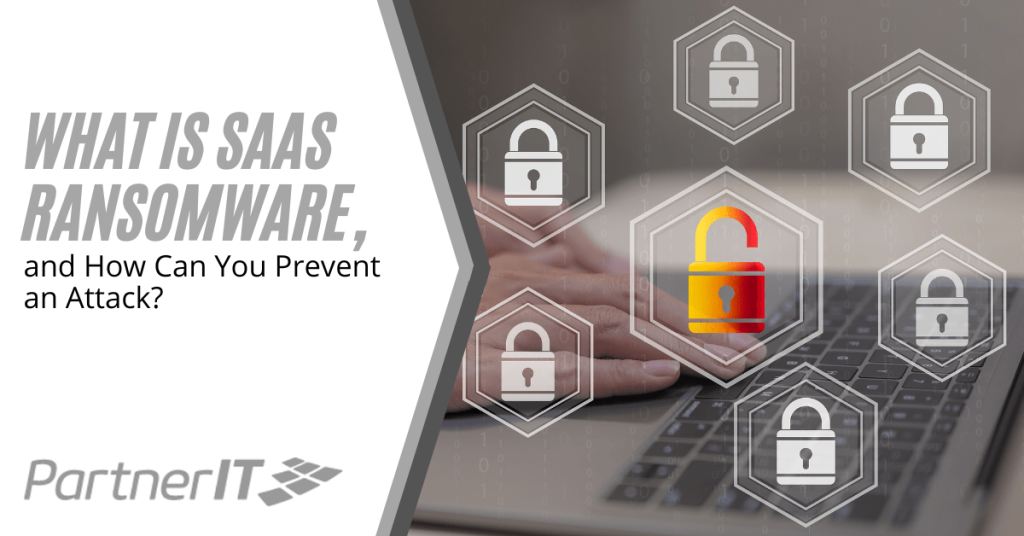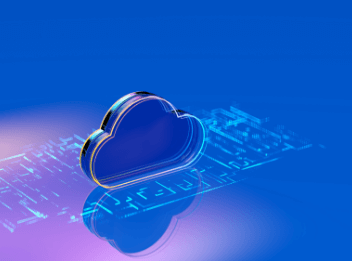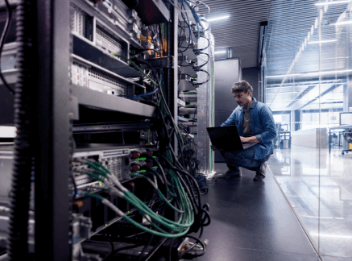
Software as a Service (SaaS) has completely changed how organizations function in the modern digital environment by providing unmatched flexibility and ease in business operations. However, this convenience comes with a big threat – SaaS ransomware.
SaaS ransomware has become one of the most dangerous cyber-attacks plaguing many organizations using the SaaS environment. Ransomware has always been a global issue. According to a statistic in Canada’s Cyber Threat Bulletin, global attacks of ransomware increased by 151% when compared to the first half of 2020. Also, another global survey by Odaseva showed that 52% of SaaS ransomware attacks were successful.
This sneaky attack preys on cloud-based programs and services, leaving organizations open to data loss and destruction. As a result, organizations need to create essential strategies with the help of a managed security service provider to protect against SaaS ransomware attacks.
Understanding SaaS Ransomware
SaaS ransomware is a malicious cyber-attack that has become sophisticated in recent years. This form of cyber extortion became widespread due to increased cloud computing and SaaS apps.
The attack pattern of SaaS ransomware makes it a challenging and ultimately disruptive form of cyber-attack. Unlike the regular way ransomware is carried out, which is encrypting the local files on a victim’s machine, SaaS ransomware infiltrates cloud-based apps and their environments, leaving critical and sensitive business data inaccessible.
Due to the use of advanced technologies and techniques by cybercriminals to exploit vulnerabilities, organizations are required to have a comprehensive and up-to-date understanding for effective prevention.
The Consequences of a SaaS Ransomware Attack
The consequences of organizations falling victim to a SaaS ransomware attack are catastrophic. Here are some of the most severe consequences of a SaaS ransomware
Data Loss
Businesses rely heavily on data; when access to those data is lost or stolen due to SaaS ransomware, it can be disastrous. Losing access to this information can lead to loss of trust, customer loss, reputational damage, and competitors’ boost.
Downtime and Business Disruption
The downtime follows a SaaS ransomware assault. This is due to the fact that after gaining unauthorized access to important data, hackers encrypt it, causing disruptions to regular business operations. Employees may be unable to access email systems, necessary apps, cloud-based tools, and other crucial information during the outage, which could cause delays in the completion of projects, the delivery of goods, or the provision of services to clients.
Financial Demands
The cybercriminal demands a ransom in exchange for decrypting the data after accessing the SaaS environment. The ransom payments are always high, and failure to pay the ransom would lead to data leakage or worse.
However, it is important to note that the release of the data is not ensured by paying the ransom, and the attackers may feel encouraged to attack the same organization again if they have first access.
Legal and Regulatory Consequences
In the event of a SaaS ransomware attack, if a customer or other sensitive data is compromised, the organization could face severe legal and regulatory consequences. This could lead to the organizations paying exorbitant fines, facing various lawsuits, and a loss of trust from stakeholders.
Preventing SaaS Ransomware Attacks
With SaaS ransomware attacks on the rise, proactive security measures must be put in place by your organization as well as your SaaS provider to prevent an attack.
Employee Training and Awareness
Just as employees are the first line of attack in any cyber-attack due to their vulnerability, so also should they be your first line of defense against any cyber threat. Educating your employees is one of the most important ways to prevent SaaS ransomware attacks.
Conduct regular cybersecurity training and awareness programs educating your employees on the latest cybersecurity threats, shadow SaaS, how to recognize and detect phishing attempts, zero-click malware, password best practices, and what to do in the event of ransomware or any form of cyber-attack.
This culture empowers employees to become the first line of defense.
Implement Multi-Factor Authentication (MFA)
Multi-factor authentication is one of the most effective cybersecurity measures today. Although it is not infallible. It ensures apps are far more secure with it than without it,
Implementing multi-factor authentication across all SaaS applications adds extra protection during login attempts. With MFA in place, users are required to provide two types of verification methods.
- Username and password
- Biometrics (fingerprint scan or face ID), OTP, Email codes, physical key, or authenticator app.
The implementation of MFA ensures that even if a cybercriminal obtains the login credentials (username and password), gaining unauthorized access will be difficult due to the inability to provide the second verification factor.
Carry Out Regular Data Backups
While data backup cannot be said to be a preventative measure against SaaS ransomware attacks, regularly backing up your data helps your organization not succumb to the ransom demand, as you will be able to restore all data stolen or lost in the case of an attack, leading to little to no operational downtime.
Ensure your backed-up data are clean, up-to-date, and stored securely in a separate environment, isolated from the primary SaaS systems.
Enforce Encryption and Limit Access Controls
Encrypting sensitive data and enforcing strict access controls are fundamental to any comprehensive cybersecurity strategy. By encrypting data at rest and in transit, you can be assured that even if cybercriminals breach your defenses, the stolen data remains unintelligible and unusable.
Also, employees at all levels should have limited access to sensitive data unless necessary to complete their tasks. This reduces the attack surface and minimizes the impact of an insider threat or potential breach.
Monitoring and Analyzing
Constant monitoring and analyzing SaaS apps, traffic, and user behavior can help prevent ransomware. Using advanced threat monitoring and analysis tools, as well as employing the help of a professional IT service provider, suspicious activities and unusual patterns within the SaaS environment can be detected immediately and prevented. Also, real-time detection can significantly reduce the impact of an ongoing attack.
Having an Incident Response Plan
Develop a well-defined and comprehensive incident response plan that outlines the step-by-step plan to take in the event of a SaaS ransomware attack. This plan should include detailed procedures for detecting, containing, and eradicating ransomware. It should also include a well-detailed communication strategy on how you will key stakeholders, employees, and customers about the situation and the steps you are taking to handle it.
Conducting Regular Security Audits
Regardless of if you have a robust security posture in place, conducting regular security audits is essential. In addition to penetration testing, conduct these audits periodically to identify and address any vulnerabilities in the SaaS environment. Additionally, working closely with cloud service providers to ensure that security updates and patches are promptly applied can bolster the overall security posture.
Protect Your SaaS from SaaS Ransomware with Partner IT
Partner IT provides a wide range of essential cybersecurity solutions to help safeguard your cloud-based and SaaS environment against SaaS ransomware and other threats.
Contact us today to learn how we can help protect your organization.


